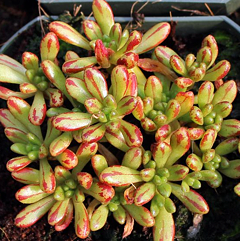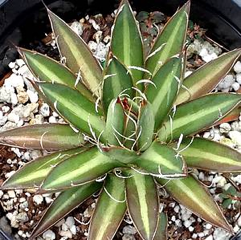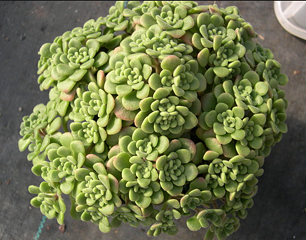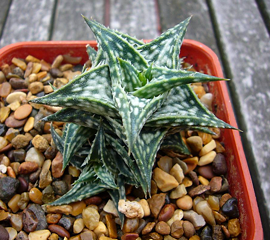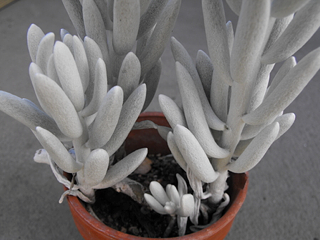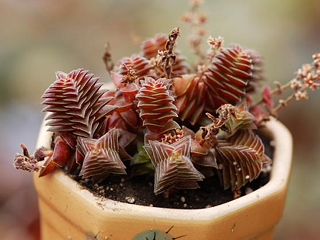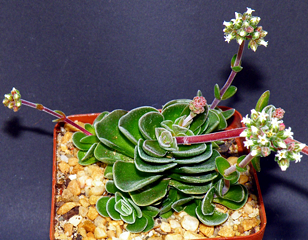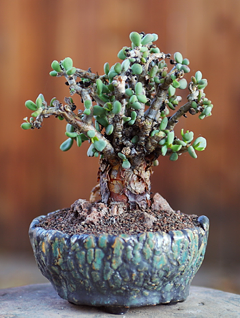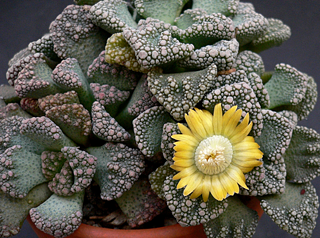Submitted by: Jim Tanner
This month, the Cacti and Succulent of the Month are both miniatures. Miniatures are defined differently for different shows. In most cases, the definition is a mature plant in a pot with an inside diameter less than three inches. Some shows define the miniature category as any plant displayed as a miniature. This allows seedlings and young plants to be entered as miniatures. Others require the plant to be the smallest in a genus. We’ll use the broad definition for the Plant of the Month.
The key to success is staging plants. Particular attention must be paid to the relation of the plant to the pot, the top dressing, and any rocks. The importance of color, geometry, and texture are all magnified in the smaller scale of miniatures.
Succulents entered as miniatures include representatives from almost every family, and a list would be far too long to print. Unusual entries often do well.
With care, species that normally grow large can be kept small, stunted by the lack of root room. Even though small, miniatures need a little fertilizer to keep growth looking fresh, and frequent watering, since there is little storage either in the pot or the body of the plant.
LATIN LOOKUP – Loquerisne Latine (Do you speak Latin)?
The meanings of latin plant names on this page – from https://davesgarden.com/guides/botanary/
- Aeonium [ee-OH-nee-um]
An ancient name used by Dioscorides for one of the species in the genus. - Agave [a-GAH-vee]
Noble, handsome. - Aichryson [eye-KRIS-on]
From the Greek ai (always) and chrysos (gold) and referring to the flower color. - Aloe [AL-oh]
From the Arabic Alloeh. - calcarea [kal-KAR-ee-uh]
Of chalky land. - capitella [kap-ih-TEL-uh]
With small head. - Crassula [KRASS-oo-la, KRASS-uh-la]
Somewhat thickened foliage; diminutive of the Latin crassus (thick, fleshy). - descoingsii [des-KOYN-see-eye]
For 20th century French botanist Dr. Bernard Descoings. - filifera [fil-LIF-er-uh]
Thread-bearing. - Portulacaria [por-tew-luh-KAR-ee-uh]
Resembling plants in the Portulaca genus. - pygmaea [pig-MAY-uh]
Dwarf. - sedifolium [sed-ih-FOH-lee-um]
With fleshy foliage. - susannae [soo-SAN-ay-ee]
Named for Susanna (or Suzanna) Muir, wife of John Muir, 19th century Scottish born American naturalist and explorer; also spelled suzannae. - Titanopsis [ty-tan-OP-sis]
Resembles Titan, the sun god; referring to the flower’s resemblance to the sun. - tomentosa [toh-men-TOH-suh]
Covered with fine, matted hairs. - tortuosum [tor-tew-OH-sum]
Twisted.
